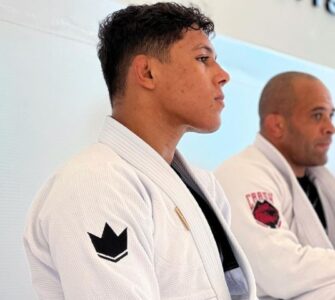You’re injured? Perhaps you thought that you could get out of that fully locked Armbar, or that their Straight Ankle Lock didn’t seem as painful; or it might be that your opponent took special delight in really ripping that Kimura… Whatever the case is, your ligaments and tendons went „pop“!
At the present moment, you may still be able to drill, but rolling is out of the equation. So what can you do to maintain the level of your cardio and physical fitness in general? Well, you could go swimming!
DRILLING IS COOL AND ALL… BUT I NEED TO VENT!
Once you injure your tendons or ligaments – such as those in your elbow, ankle, shoulder, knee or wrist – it takes quite a bit of time before the healing process truly starts to manifest itself. In other words: you limp or keep your arm stiff for quite a while before you feel real improvements.
This is a difficult blow for many Brazilian Jiu Jitsu practitioners. When you’re limited in movement, that doesn’t just mean that you can’t roll and train as you used to; but, on a much deeper level, it means that you can’t go all out. You can’t give it your all! And that’s something which starts bothering everyone who’s been training Jiu Jitsu for a while; you’re used to the feeling of being dead-tired at the end of those rounds and to the bitter-sweet moment of laying down to sleep while experiencing all types of muscle soreness.
Sure, you can look at this situation from the positive side – drills are going to be great for you! Having that additional time to sharpen up the techniques you are lacking in is a phenomenal opportunity… But, let’s face it; nothing can replace that feeling of gasping for air, of being totally – wonderfully – exhausted at the end of the session.
SWIMMING IS A GREAT OPTION FOR INJURED GRAPPLERS
And that’s why swimming is so awesome for when you’re injured. First of all, have you ever gone to a pool, a recreational or a sport-oriented one, and seen all those grandpas and grandmas in there, just threading through the water from one side to another? There’s a reason to it: swimming offers them a chance to move without subjecting their joints to pain.
Basically, swimming is a sport that probably puts the least amount of pressure onto your joints. Therefore, it’s a great option for your body to stay active, improving the blood flow (which is important for the speeding-up of your recovery) before you’re healthy enough to roll with vigor.
Now before you go on saying: „But BJJEE, I’m no grandpa or grandma, I need something more hardcore for my training than this“, understand that you can increase the intensity of your swims. You can do this either by simply swimming faster (through interval training, for example); or by decreasing the amount of breaths you can take per a given number of strokes (if you don’t know how to breathe properly while swimming, then learn – it’s vital).
Other than that, you can challenge yourself further by switching between different styles, such as the freestyle, breaststroke and butterfly; and seeing which one you can push yourself most with, while not aggravating your injury at the same time.
So, don’t stop training BJJ. Stay involved in it and drill as much as you can. Take notes and practice visualization. But if you want to push yourself, to maintain and somewhat even improve your cardiovascular fitness – as well as heal up faster – then take up swimming a couple of times per week as well.

















